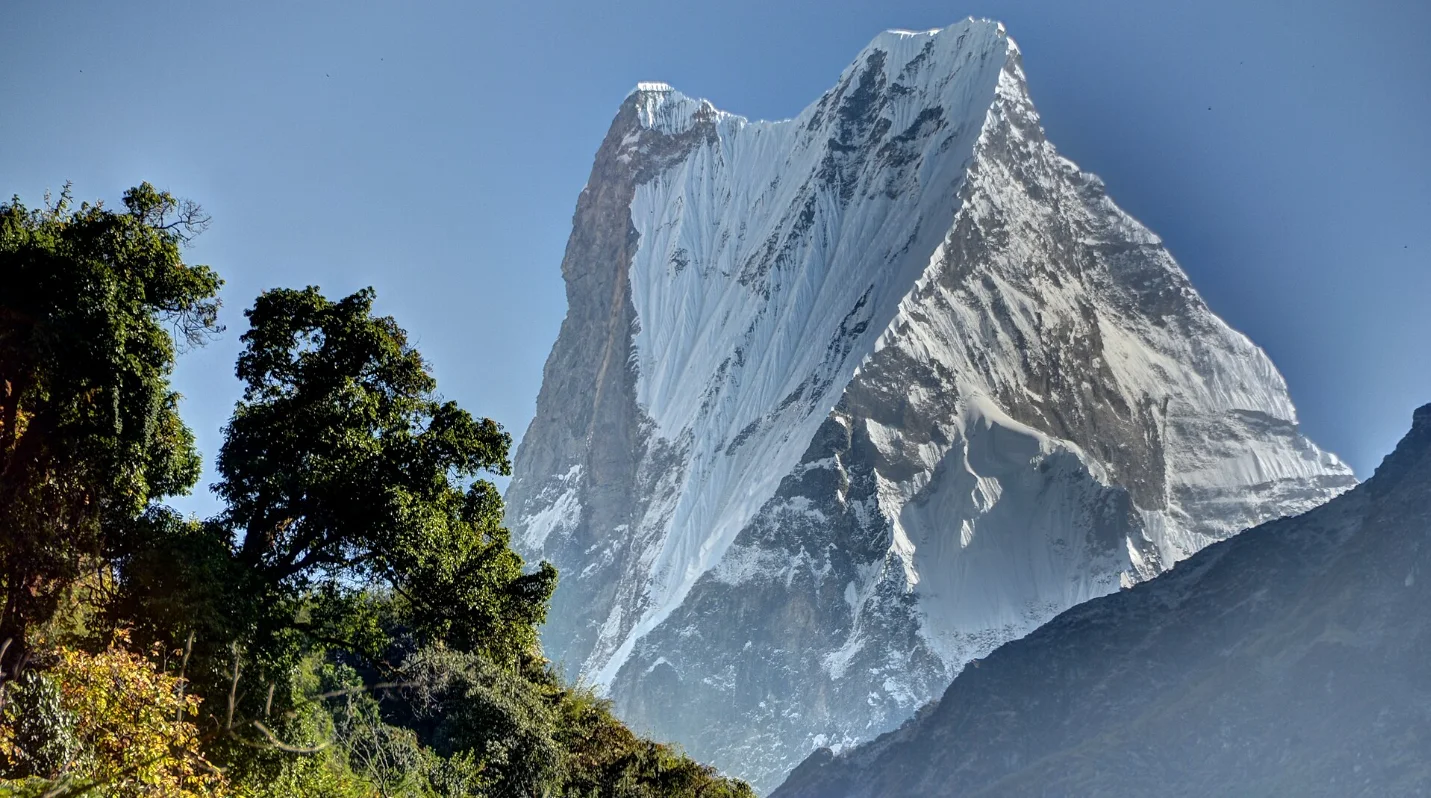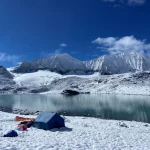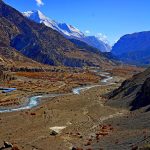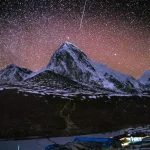Machhapuchhre (Fishtail): Nepal’s Sacred & Unclimbed Peak
Mount Fishtail, known locally as Machhapuchhre, is a revered peak in Nepal’s Annapurna Conservation Area, standing at 6,993 meters (22,943 feet). Its distinctive double-summit silhouette, resembling a fish’s tail, makes it one of the most iconic mountains in the Himalayas.
Sacred to the Gurung and local communities, Mount Fishtail is unclimbable due to its spiritual significance, embodying Nepal’s rich cultural heritage and natural splendor. This majestic peak captivates adventurers, photographers, and spiritual seekers with its untouched beauty and profound symbolism.
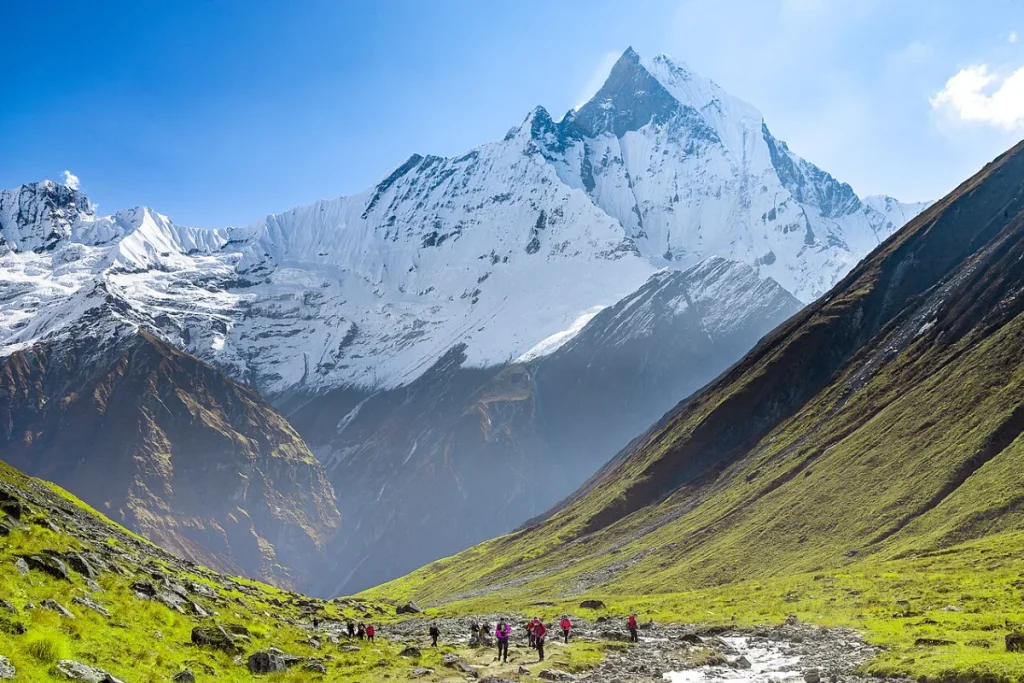
Spiritual Significance of Mount Fishtail
Mount Fishtail holds deep spiritual importance for the Gurung and other indigenous communities, who regard it as the abode of divine spirits. Considered too sacred to be climbed, the mountain has been off-limits to mountaineers since a partial ascent in 1957, preserving its sanctity.
Its fish-tail shape is believed to symbolize spiritual balance and harmony in local Buddhist and Hindu traditions. Mount Fishtail’s mystique draws pilgrims and visitors who honor its sacred status through prayers and offerings at nearby villages like Ghandruk.
The mountain’s spiritual allure is enhanced by its visibility from key points in the Annapurna region, where prayer flags and rituals reflect its revered status, making Mount Fishtail a symbol of Nepal’s sacred landscape.
Geological Marvel of Mount Fishtail
Machhapuchhre is a geological masterpiece within the Annapurna massif, formed millions of years ago by tectonic uplift in the Himalayan range. Its unique double-peaked structure, with steep ridges and snow-clad slopes, results from glacial erosion and tectonic activity.
Standing alongside giants like Annapurna I (8,091m), Mount Fishtail’s relatively lower elevation belies its striking presence, dominating the skyline with its symmetrical form. Its isolation from climbing activity has preserved its pristine geological features, making it a focal point for geologists and nature enthusiasts.
Cultural Importance in the Annapurna Region
Machhapuchhre is deeply woven into the cultural fabric of the Gurung and Magar communities. Villages like Ghandruk and Chhomrong, nestled in its shadow, feature traditional stone houses, cultural museums, and festivals celebrating the mountain’s divine presence.
Local folklore attributes protective powers to Mount Fishtail, with rituals and offerings conducted to honor its spirit. Visitors can witness Gurung dances, weaving demonstrations, and authentic Nepalese cuisine like dal bhat, connecting deeply with the region’s heritage.
Biodiversity Around Mount Fishtail
The Machhapuchhre region, part of the Annapurna Conservation Area, is a biodiversity hotspot with over 1,226 plant species, 102 mammals, and 474 bird species. The mountain’s slopes transition from subtropical forests to alpine meadows, supporting vibrant rhododendron blooms (Nepal’s national flower), oaks, and bamboo groves.
Wildlife includes Himalayan tahr, musk deer, and birds like Himalayan monals and blood pheasants. Spring (March–May) brings colorful flora, enhancing Mount Fishtail’s scenic allure for photographers and nature lovers.
Photography and Visual Appeal
Machhapuchhre is a photographer’s paradise, its fish-tail silhouette creating dramatic compositions against the Annapurna massif. Sunrise and sunset cast alpenglow on its snow-covered peaks, while clear nights offer stunning astrophotography opportunities.
The mountain’s visibility from viewpoints like Poon Hill and Annapurna Base Camp makes it a focal point for capturing Himalayan beauty. Shifting clouds and light create dynamic scenes, ensuring Mount Fishtail remains a visual highlight for adventurers and artists.
Environmental Challenges and Conservation
Machhapuchhre faces environmental challenges from climate change, including glacial retreat and altered precipitation patterns affecting the Annapurna region’s ecosystems. The Annapurna Conservation Area relies on initiatives to protect its biodiversity, supported by visitor permits and local efforts like the Annapurna Conservation Area Project. Visitors are encouraged to follow Leave No Trace principles, use reusable water bottles, and support eco-friendly initiatives to preserve Mount Fishtail’s pristine environment for future generations.
Visiting Mount Fishtail Responsibly
While Mount Fishtail is unclimbable, its base areas, like Machhapuchhre Base Camp (3,700m), are accessible via trails from Pokhara. Visitors need a TIMS card and an Annapurna Conservation Area Permit, obtainable in Kathmandu or Pokhara. Respecting its sacred status involves avoiding intrusive activities and supporting local communities through sustainable tourism, such as staying in Gurung-run tea houses and purchasing local crafts, ensuring Mount Fishtail’s cultural and natural legacy endures.
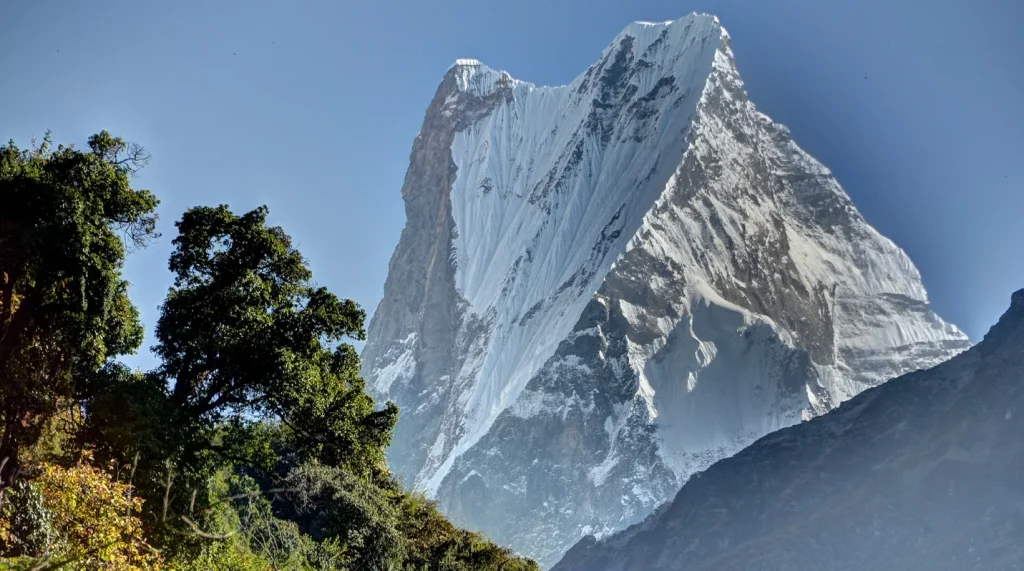
Global Allure
Mount Fishtail captivates global adventurers with its untouched beauty and spiritual significance. Unlike climbable peaks, its protected status enhances its allure, drawing those seeking to experience Nepal’s sacred landscapes without disturbing them.
From cultural festivals in nearby villages to its prominence in Himalayan photography, Mount Fishtail stands as a symbol of harmony between nature and spirituality, inspiring awe and respect in all who behold it.
Book your trek from HERE.
Machhapuchhre, Nepal’s sacred Himalayan icon, blends spiritual reverence, geological grandeur, and ecological richness. Its unclimbable peaks and cultural significance make it a must-see for those exploring the Annapurna region’s timeless beauty.
